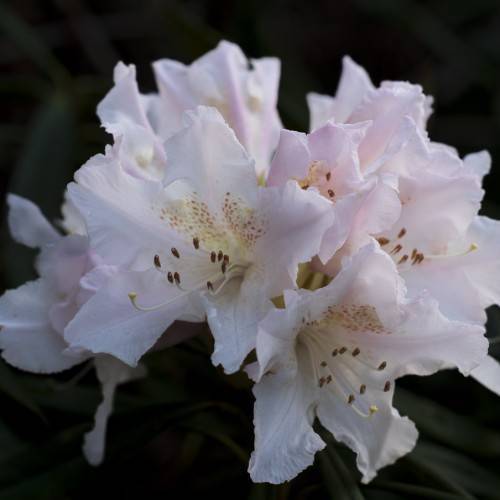
rhododendron
Rhododendron 'Janet Blair'
Cycle:
Perennial
Watering:
Average
Hardiness Zone:
5 - 8
Flowers:
Flowers
Sun:
Part shade
Leaf:
Yes
Growth Rate:
High
Maintenance:
Moderate
Poisonous To Pets:
Yes
Care Level:
Medium
watering
Water your rhododendron regularly, aiming for deep, infrequent watering. Depending on your climate and soil type, it may need anywhere from 1-2 inches of water every 10-14 days during the warm season. It can also do with less frequent, but heavier watering. When watering, ensure that the soil is evenly moist and that water penetrates deep into the root zone. Avoid watering on a schedule, instead water when the top inch of soil is dry to the touch. In the cooler months, reduce watering to once a month or so, but continue to monitor the soil moisture.
sunlight
Rhododendron 'Janet Blair' thrives on being grown in moist, but well-drained soil and prefers partial to full shade. This plant species requires at least 4-6 hours of indirect sunlight per day during the spring and summer seasons to maintain its full bloom and health. It can tolerate more sunlight if it is not very hot or direct. Generally, it should be placed in a bright spot and away from drafts and heat of any kind. In the winter months, this plant does not require any sunlight and can even thrive in near full darkness.
pruning
Prune Rhododendron 'Janet Blair' in early summer, when the new growth is around 4 to 6 inches long. For optimum health and flowering, prune the shrub back by approximately 1-third of its size. Regularly remove dead wood, any crossing branches, and any diseased foliage. Try to keep the centre of the plant open to improve the air circulation and to reduce the risk of diseases. Additionally, it is important to remove any shoots coming from the base of the Rhododendron, as this can lead to straggly growth.
